Essential Woodworking Tools for Beginners: A Starter Kit
- March 28, 2024
- 0 comment
Starting your woodworking journey? This guide lays out the essential tools for beginners, ensuring you have everything needed to blend creativity with technical skill, whether for professional aspirations or DIY projects. Dive in to establish a solid foundation and build your skills.
Level up your workshop! We’ve rated the best table saws, best circular saws & best jigsaws for all your cutting needs.
List of What Tools Do You Need to Start Woodworking
What Is Woodworking?
Woodworking is the art, craft, or skill of creating objects, structures, or decorative pieces from wood. This ancient practice dates back to the earliest civilizations, where wood was one of the first materials to be shaped into tools, shelter, and art due to its abundance, versatility, and malleable nature. Over centuries, woodworking has evolved from a necessity for survival to a sophisticated craft that blends functionality, beauty, and intricate design.

Woodworking involves cutting, shaping, joining, and finishing wood to construct both practical and artistic items. These can range from furniture, cabinetry, and housing components to intricate sculptures, musical instruments, and decorative items. The scope of woodworking is vast, encompassing a variety of techniques and specializations, each with its own set of tools, methodologies, and aesthetic considerations.
What Are the Benefits of Woodworking?
Physical Benefits
- Enhanced Fine Motor Skills: Woodworking involves various precise movements, from measuring and cutting to carving and sanding. These activities improve hand-eye coordination and dexterity.
- Physical Exercise: Though it might not replace a gym session, woodworking can be physically demanding. Tasks like sawing, planing, and even standing for extended periods can contribute to physical fitness.
- Improved Brain Function: The planning and problem-solving aspects of woodworking can enhance cognitive functions, including spatial reasoning and three-dimensional thinking.
Mental and Emotional Benefits
- Stress Reduction: Engaging in woodworking can have a meditative effect, allowing individuals to focus on the task at hand and momentarily put aside life’s stresses. The act of creating something with one’s hands can be deeply satisfying and therapeutic.
- Creativity and Self-expression: Woodworking offers endless possibilities for creativity. Each project is an opportunity to express oneself, experiment with designs, and explore new techniques.
- Sense of Accomplishment: Completing a woodworking project, whether it’s a simple box or an intricate piece of furniture, provides a tangible sense of achievement and boosts self-esteem.
Educational and Developmental Benefits
- Learning and Growth: Woodworking encourages continuous learning, from mastering basic techniques to exploring advanced craftsmanship. This perpetual learning curve keeps the mind engaged and constantly developing.
- Problem-solving Skills: Every woodworking project presents its unique challenges, requiring critical thinking and innovative solutions. These problem-solving skills are transferable to other areas of life.
- Patience and Perseverance: Woodworking projects often require time, patience, and persistence. Learning to work through frustration and setbacks can foster resilience and a strong work ethic.
Social and Community Benefits
- Community Connection: Woodworking can connect individuals with like-minded communities, both locally and online. These communities offer support, inspiration, and the exchange of ideas.
- Heritage and Tradition: Engaging in woodworking can provide a connection to cultural heritage and history, preserving traditional crafts and techniques for future generations.
Environmental Benefits
- Sustainability: Woodworking can promote environmental awareness and sustainability, especially when using locally sourced, reclaimed, or sustainably harvested wood.
- Upcycling and Recycling: Woodworkers often repurpose old wood or furniture, giving new life to materials that might otherwise be discarded.
Economic Benefits
- Cost Savings: DIY woodworking projects can lead to significant cost savings, as handcrafted furniture and home improvements can be less expensive than store-bought alternatives.
- Income Potential: For those who hone their craft, woodworking can become a source of income through the sale of handmade items or custom work.
Beginners Woodworking Tools You Need
1. Power Tools
Table Saw
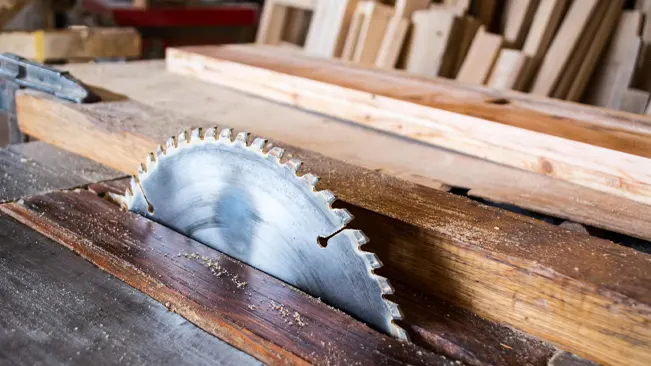
The table saw, often regarded as the cornerstone of woodworking shops, boasts unparalleled versatility and precision, making it a favorite among woodworkers. Its robust design and powerful motor enable it to perform a multitude of tasks with ease and accuracy. Whether it’s making precise straight cuts, ripping lumber to specific widths, or even executing intricate joinery tasks, the table saw is up to the challenge. With the addition of specialized jigs and fixtures, its capabilities extend even further, allowing for the creation of tight-fitting tenons and dados, essential components in furniture making and cabinetry. The table saw’s adjustable blade height and angle also offer the flexibility to make bevel and miter cuts, adding to its repertoire of skills. For woodworkers looking to invest in a single, multifunctional tool that can serve as the workhorse of their shop, the table saw is often the go-to choice.
Circular Saw
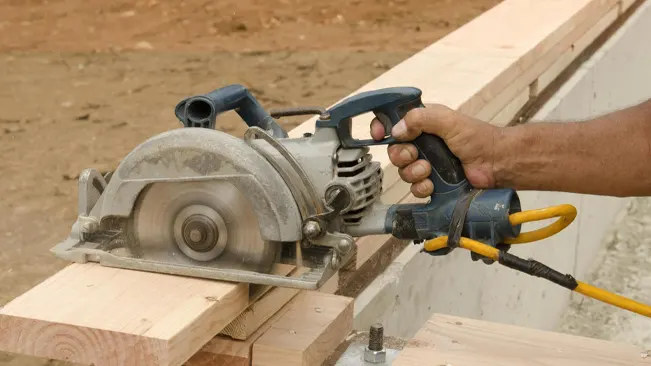
The circular saw is a powerhouse of portability and versatility, making it an indispensable tool for both the workshop and the job site. Known for its ability to make quick work of large sheets of plywood and other panel materials, the circular saw is the go-to for tasks that require mobility and efficiency. Its lightweight design and ease of use allow for significant flexibility in cutting applications, from framing work to sheet goods breakdown. With the right blade selection, the circular saw can cut through a variety of materials with precision and ease, ensuring clean, straight cuts every time. The addition of a guide rail transforms the circular saw into a precision cutting tool, rivaling the accuracy of a table saw for many tasks. Its adaptability to different blades also makes it suitable for cutting materials other than wood, such as plastics and metals, enhancing its utility in a diverse range of projects.
Jigsaw
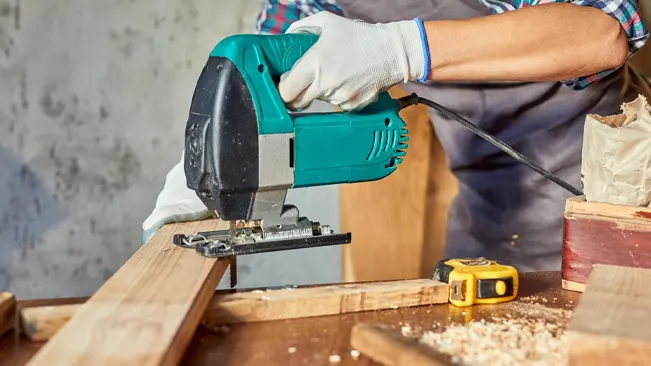
The jigsaw stands out as the master of curves and intricate cuts in the realm of woodworking tools. Its compact design and narrow blade make it the ideal tool for cutting elaborate shapes and tight curves that other saws simply cannot achieve. The jigsaw’s ability to navigate through complex patterns and around tight corners makes it invaluable for decorative projects, cabinetry, and anywhere precision curved cuts are required. Its variable speed settings allow for optimal control over the cut, accommodating a wide range of materials from softwoods to hardwoods, and even non-wood materials like metal and plastic with the appropriate blade. The jigsaw is not only versatile in the types of cuts it can make but also in its ability to make plunge cuts, starting a cut in the middle of a workpiece without the need for a pilot hole. For anyone looking to add intricate details and custom shapes to their projects, the jigsaw is an essential tool in their arsenal.
2. Hand Tools
Hammers
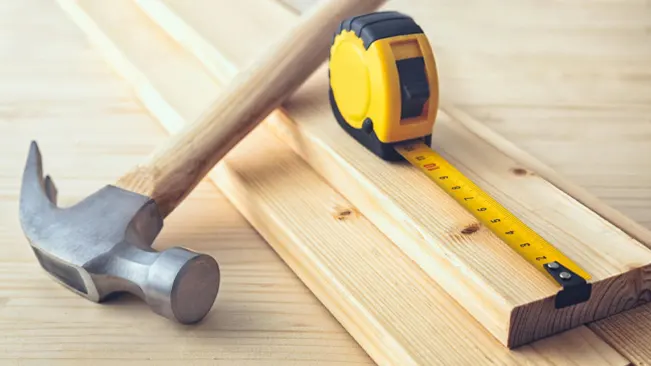
Hammers, in their various forms, are fundamental to woodworking, offering both functionality and finesse. The claw hammer, with its dual-purpose design, not only facilitates the driving and removal of nails but also plays a pivotal role in adjusting joinery and ensuring the precise fit of wooden assemblies. Its claw end is adept at prying apart stubborn pieces and removing nails without damaging the workpiece. On the other hand, the wooden mallet, with its broader, softer striking surface, is specifically tailored for woodworking tasks that require a more delicate touch. It’s the tool of choice for driving chisels and tapping wood joints together, offering enough force for effective work without marring the surface of the wood. The mallet’s design distributes force evenly, making it ideal for tasks that require controlled, gentle persuasion rather than brute strength, ensuring the integrity and finish of the workpiece are preserved.
Chisels

Chisels are the quintessence of precision in woodworking, allowing for the meticulous shaping, cutting, and finishing of wood. Their utility in executing fine joinery work, such as dovetails and mortises, is unparalleled. A well-maintained set of chisels, honed to a razor-sharp edge, can slice through wood with remarkable ease and accuracy, making them indispensable for tasks that require surgical precision. The variety in width and shape of chisels—from narrow, pointed tips for intricate work to broad edges for removing larger sections of wood—equips the woodworker to tackle a broad array of tasks with confidence. Whether cleaning out the crisp corners of a joint or shaping a delicate curve, the chisel stands as a testament to the woodworker’s skill and the art of woodworking itself. Its simplicity belies its versatility and the depth of skill required to wield it effectively, making it a tool that grows with the woodworker over time.
Screwdrivers

Screwdriver holds its ground as an essential instrument in the woodworker’s toolkit. Despite the prevalence of power drills and impact drivers for quickly driving screws, the screwdriver provides unparalleled control and precision for tasks that necessitate a gentler, more calculated approach. The tactile feedback and manual control offered by a traditional screwdriver allow for the careful tightening of hardware, minimizing the risk of over-tightening or stripping that can occur with power tools. The distinction between flathead and Phillips screwdrivers, along with variations in size and length, ensures that the woodworker can engage with a wide range of hardware types, maintaining the integrity and aesthetic of their projects. The screwdriver, in its simplicity and precision, underscores the balance between speed and craftsmanship in woodworking, affirming its enduring value in ensuring the fine details of a project are executed with care and precision.
How to Learn Woodworking?
1. Start with Research
- Books and Magazines: Begin by exploring woodworking books and magazines, which can provide a solid foundation in the basics, including tools, techniques, and project plans.
- Online Resources: The internet is a treasure trove of information, with countless tutorials, blogs, and videos. Platforms like YouTube have a plethora of channels dedicated to woodworking of all levels.
2. Take a Class
- Local Workshops: Many community centers, colleges, and specialized woodworking schools offer classes ranging from beginner to advanced levels. This can provide hands-on experience under the guidance of experienced woodworkers.
- Online Courses: There are online platforms that offer structured courses in woodworking, from introductory courses to more specialized techniques.
3. Understand the Tools
- Basic Tool Kit: Familiarize yourself with the basic tools of woodworking, such as hammers, saws, chisels, and sanders. Understanding the purpose and proper use of each tool is crucial.
- Safety First: Learn the safety procedures for each tool. Woodworking involves sharp tools and machinery, making safety knowledge indispensable to prevent injuries.
4. Practice Basic Skills
- Measuring and Marking: Precision is key in woodworking. Practice measuring and marking accurately, as these skills form the basis of all woodworking projects.
- Cutting and Shaping: Begin by practicing basic cutting techniques with hand saws and move on to power tools like jigsaws and circular saws as you gain confidence.
- Joinery: Learn the basics of joinery, such as creating dovetail joints, mortise and tenon joints, and using fasteners. These skills are essential for building sturdy, durable pieces.
5. Start with Simple Projects
- Small Projects: Begin with small, manageable projects like birdhouses, simple shelves, or a basic stool. These projects can teach you the fundamentals of construction and finishing without overwhelming you.
- Repetition: Don’t hesitate to repeat projects. Repetition reinforces skills and can improve your precision and efficiency.
6. Join a Community
- Woodworking Groups: Joining a local or online woodworking community can provide support, inspiration, and knowledge sharing. These communities are invaluable for beginners seeking advice and feedback.
- Attend Workshops and Shows: Woodworking shows and workshops offer opportunities to see live demonstrations, discover new tools and techniques, and connect with other woodworkers.
7. Learn from Mistakes
- Trial and Error: Mistakes are inevitable and are a valuable part of the learning process. Each error is an opportunity to learn and improve.
- Patience: Woodworking requires patience, as skills are honed over time. Embrace the journey and celebrate progress, no matter how small.
3. Safety Equipment
Safety Glasses
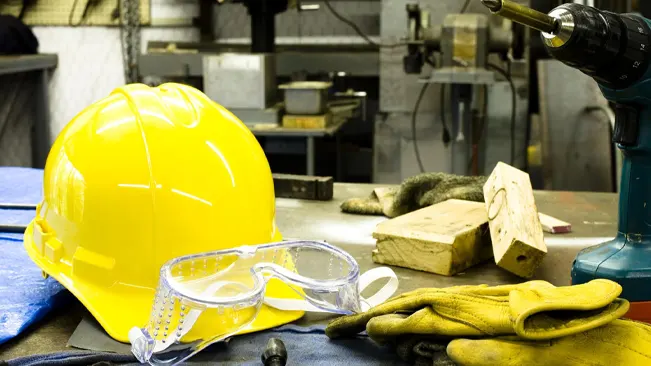
Safety glasses are an indispensable component of woodworking safety gear, designed to shield the eyes from harmful dust, debris, and splinters that arise during cutting, sanding, or machining operations. These protective eyeglasses are engineered with robust materials to withstand impacts, ensuring that the eyes remain safeguarded from potential hazards. Wearing safety glasses is a non-negotiable practice in the workshop, as even a minor eye injury can have significant consequences, impairing vision and halting progress on projects.
Ear Protection

Woodworking machinery and tools generate high levels of noise, which can lead to hearing damage over prolonged exposure. Ear protection, such as earmuffs or earplugs, is essential to mitigate the risk of hearing loss or tinnitus. These protective devices are designed to attenuate noise, preserving the woodworker’s hearing while allowing for concentration and focus amidst the cacophony of a busy workshop.
Dust Mask or Respirator
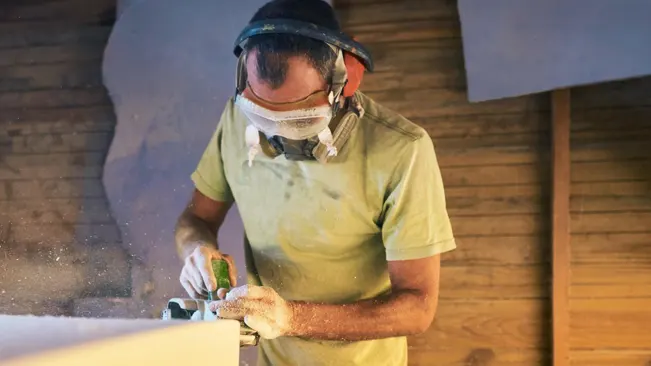
The inhalation of sawdust and other particulate matter generated during woodworking poses a risk to respiratory health. A dust mask or respirator is crucial for filtering out these airborne particles, preventing them from entering the respiratory system. More advanced respirators offer enhanced filtration and comfort, ensuring that woodworkers can work for extended periods without exposure to harmful dust, especially when working with woods known to be allergenic or toxic.
Work Gloves

Work gloves serve as a protective barrier for the hands, safeguarding against splinters, cuts, and abrasions that are common in woodworking. They also provide improved grip and handling of materials and tools, reducing the likelihood of accidents. Selecting the right pair of work gloves involves finding a balance between protection and dexterity, ensuring that the gloves offer sufficient safety without impeding the fine control needed for woodworking tasks
Layout Tools

Precision in measurement and layout is the foundation of successful woodworking projects. Tools such as framing squares, speed squares, and drafting compasses are integral for marking accurate lines, angles, and curves. These layout tools enable woodworkers to translate design plans into physical pieces with accuracy, ensuring that components fit together perfectly and the finished project meets the desired specifications. Their consistent use is a hallmark of craftsmanship, underlying the importance of meticulous planning and execution in woodworking.
Techniques and Processes
- Sawing: The fundamental act of cutting wood into various shapes and sizes, using tools from simple hand saws to sophisticated power saws like table saws and bandsaws.
- Shaping: Involves carving, turning on a lathe, or using routers and chisels to create intricate designs or shapes in wood.
- Joinery: The process of connecting pieces of wood together to create a structure. Traditional joinery techniques like dovetails, mortise-and-tenon, and box joints are celebrated for their strength and beauty.
- Finishing: The final step in woodworking, finishing involves sanding, staining, painting, or sealing the wood to enhance its appearance and protect it from environmental damage.
Conclusion
In conclusion, starting your woodworking journey doesn’t require an extensive collection of tools but rather a carefully selected assortment of essential hand and power tools. Beginning with foundational items like saws, drills, and sanders, along with basic hand tools such as hammers, chisels, and screwdrivers, provides a solid base from which to expand your toolkit as your skills and interests grow. Prioritizing quality over quantity and investing in durable, reliable tools will not only enhance the efficiency and enjoyment of your woodworking projects but also ensure the longevity of your tools. Regular maintenance of these tools further ensures their optimal performance and reliability. With these fundamental tools and principles in mind, you’ll be well-equipped to embark on a fulfilling woodworking journey, exploring the endless creative possibilities that this craft has to offer.
FAQs
- What is the first tool I should buy if I’m new to woodworking?
Starting with a versatile tool like a quality circular saw or a set of basic hand tools (hammer, screwdrivers, and chisels) is a great foundation. These tools can handle a variety of tasks and are essential for many projects. - Can I start woodworking projects with minimal space and tools?
Absolutely! Many enthusiasts begin in small spaces with just a few tools. Focus on projects that match your space and tool constraints, and consider multipurpose tools to maximize efficiency. - How do I maintain my woodworking tools to ensure their longevity?
Regular cleaning, proper storage, and periodic sharpening (for cutting tools) are key. Also, make sure to use each tool according to its intended purpose to prevent unnecessary wear and tear. - Is it necessary to invest in high-quality tools right from the start?
While high-quality tools can be a significant investment, starting with a few essential, good-quality tools is advisable. You can gradually build your collection as your skills and needs grow. - Are there any online resources or communities for beginner woodworkers?
Yes, there are numerous online forums, video tutorials, and social media groups dedicated to woodworking. These communities can be invaluable sources of advice, inspiration, and support as you embark on your woodworking journey.

Joel Cunningham
Forestry AuthorI'm Joel Cunningham, an expert in pruning and weed management with over a decade of experience. My skills are rooted in formal training and extensive practice, focusing on advanced pruning techniques and efficient weed control. I'm known for my quality work, precision, and deep understanding of plant health and soil dynamics. My contributions extend to educational initiatives where I share sustainable practices and advice, establishing myself as a reliable and authoritative figure in the gardening community.













Leave your comment